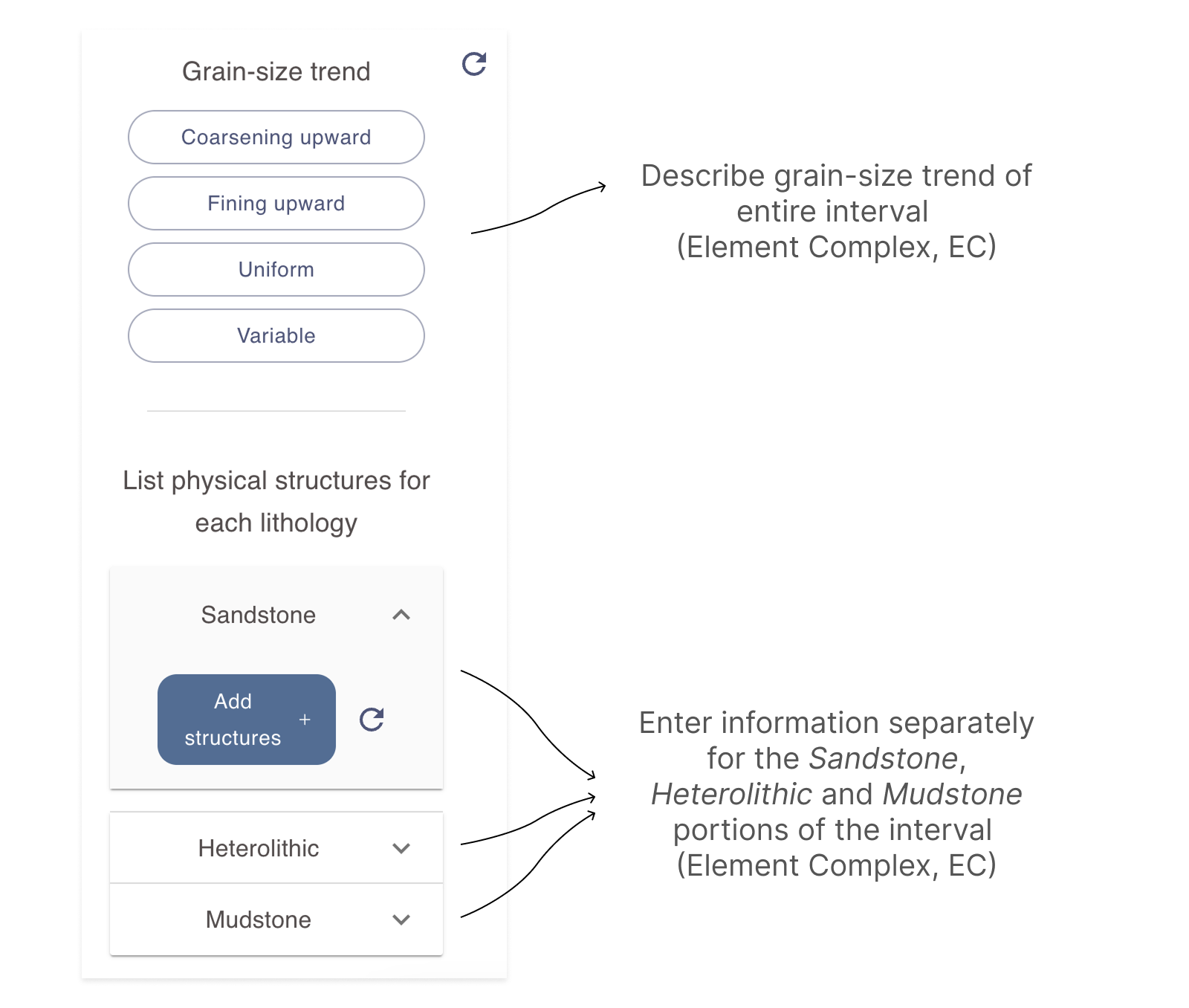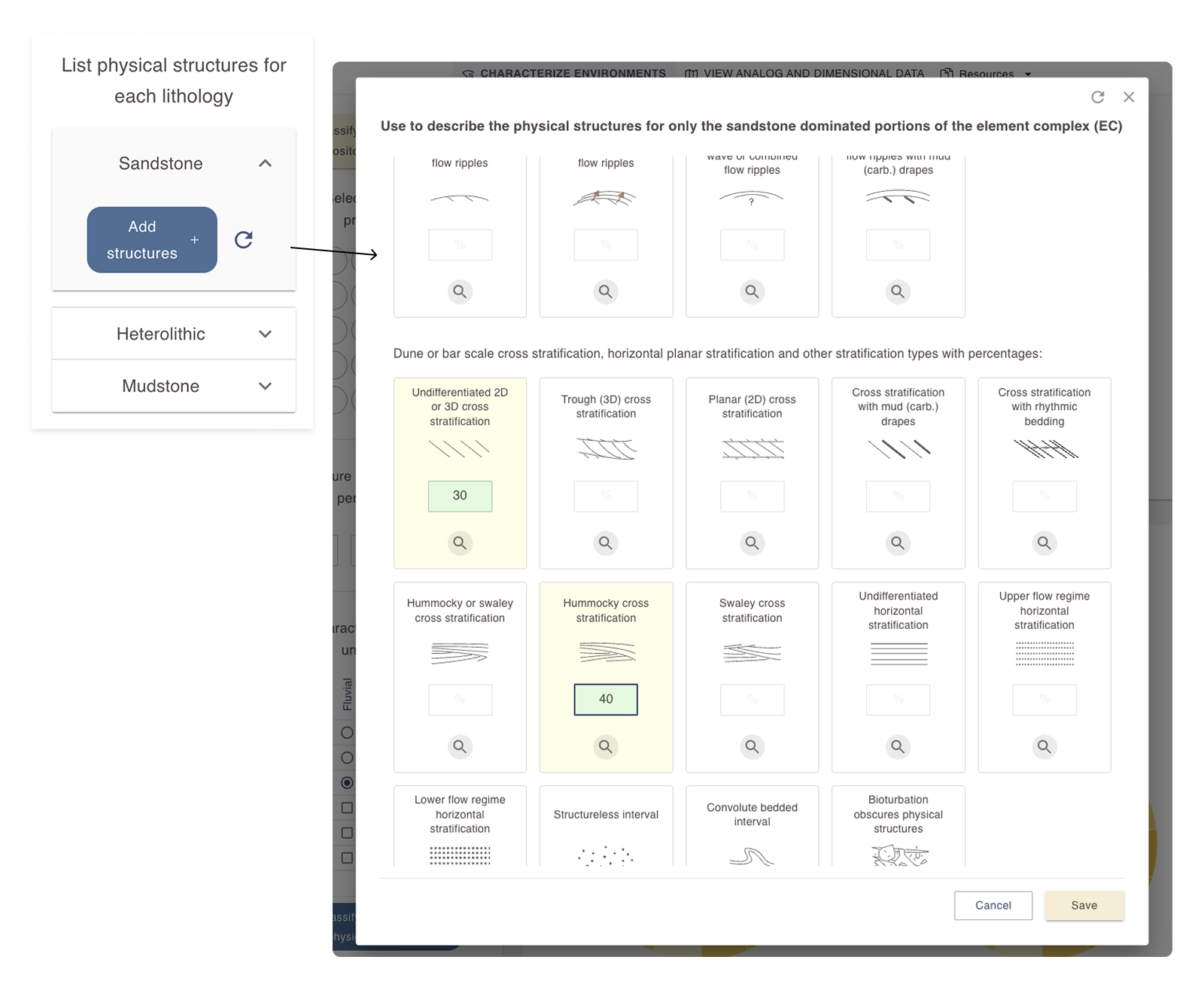Interpret environments based on physical structures
Interpret local depositional environments in core based on direct observations of presence and relative percentages of physical structures.
Enter information about physical structures and their percentages using the appropriate filters to view suggested interpretation results. These can be further refined using additional observations and facies models.
How does it work?
This portion of the dashboard is based on an expert system with thousands of relationships that links observations of physical structures within a sandstone, heterolithic, or mudstone lithology to possible Element complex (EC) interpretations.
The interpretation results can support the development of depositoinal conceptual models for the subsurface interval and inform static modeling decisions.
Practical Uses
Identify the range of possible local depositional environments (EC Categories) based on observed physical structures separated by sandstone, heterolithic and mudstone lithologies.
Explore alternative depositional scenarios that may have been overlooked in previous assessments and assess uncertainty.
Use interpretation results to guide predictions about potential parent depositional environments and possible architectures in unsampled areas beyond cored wells.
Skills required
- Identification of maximum transgressive and maximum regressive surfaces
- Identification of Element complex (EC) boundaries
- Identification of sandstone, heterolithic and mudstone lithology intervals within an Element complex (EC)
- Identification of physical structures and determination of their relative percentages within a lithology
How to apply physical structure filters
Things you should know
Core intervals using this approach should only be interpreted after:
- Vertical Element complex (EC) boundaries have been defined.
- Each EC interval has been subdivided into sandstone, heterolothic and mudstone lithologies.
Lithologies are defined in the following manner:
- Sandstone - contains less than 10% mudstone strata.
- Mudstone - contains less than 10% sandstone strata
- Heterolithic - covers intervals that fall between the sandstone and mudstone definition criteria listed above. Both mudstone and sandstone strata should be greater than 10%.
Follow these steps:
-
Open the Characterize Environments dashboard.
-
In the filter sidebar, locate the Classify by identifying physical structures filter section.
-
Make the most appropriate selection in the Grain-size trend filter. The grain-size trend refers to the entire EC interval being classified and not to individual lithologies.

-
For each separate lithology in the Element complex (EC) interval:
-
Open the accordion filter for the appropriate lithology
-
Click on the Add structures button to open a pop-up window where you will be able to enter information for individual physical structures
-
Select all physical structures present in the lithology and enter their relative percentages relative to the total thickness of the lithology.

-
Use the hand lens buttons to view image examples of physical structures to help in identification.
-
Close the pop-up physical structures window and observe how the display area on the right has updated based on your inputs.
-
Combining physical structure filters with other filter types
When you apply filters from multiple sections in the Characterize Environments dashboard, the results displayed will reflect the categories common to all selected filters.
View and modify depositional environment results
The results display in the Characterize environments dashboard in shared by depositional environment interpretation filters. Open the View and modify environment category results page for more information the results area.